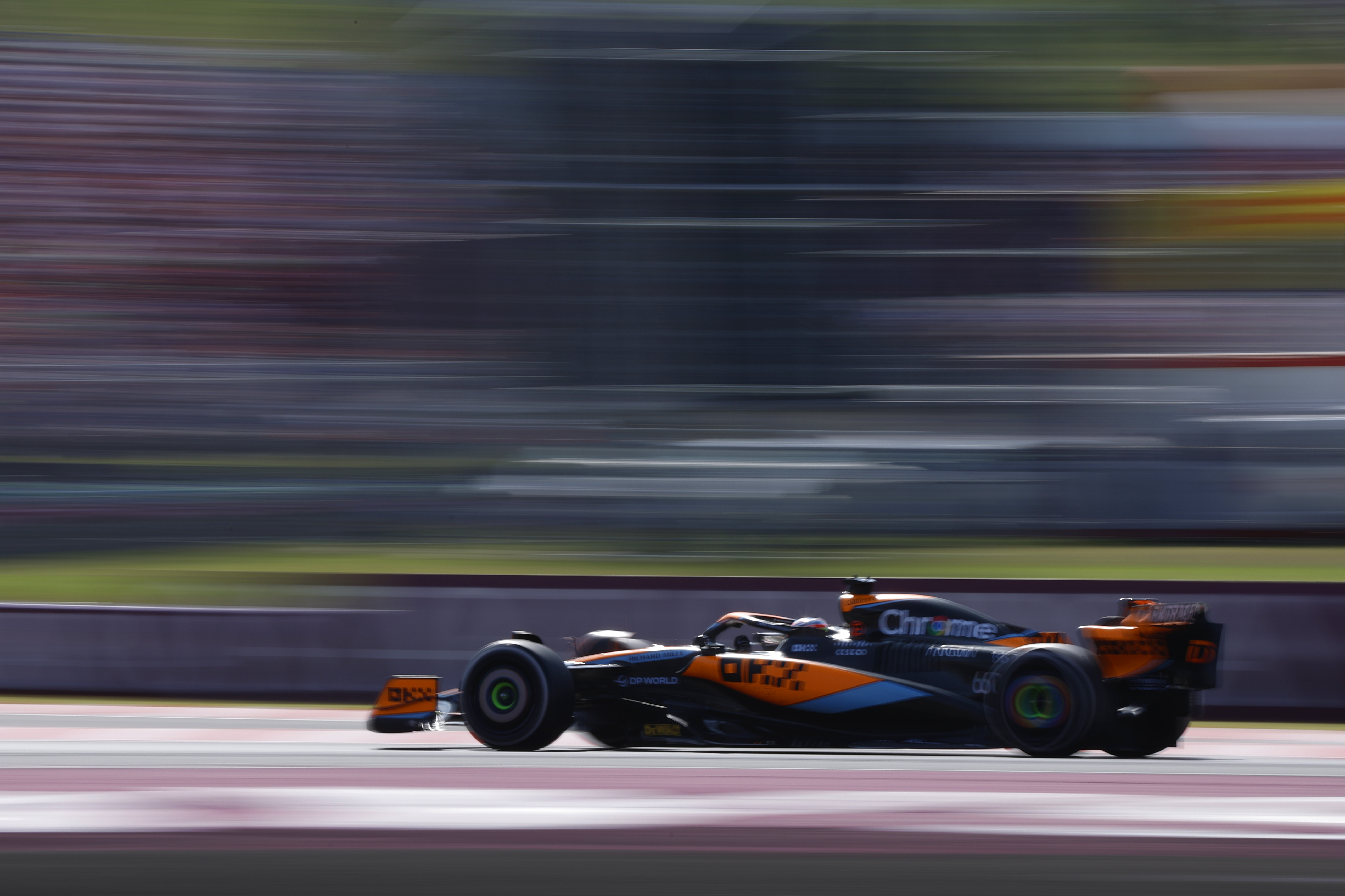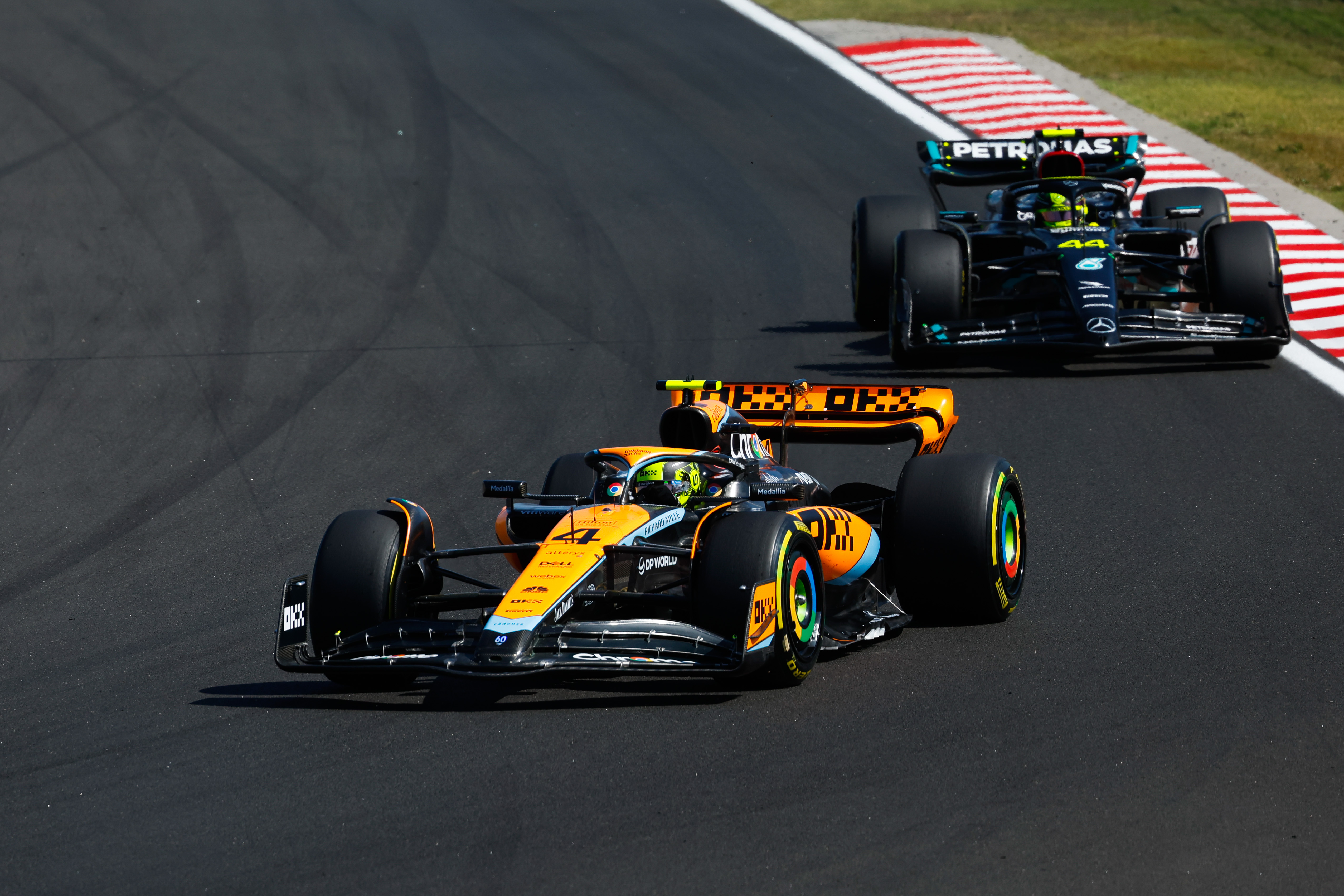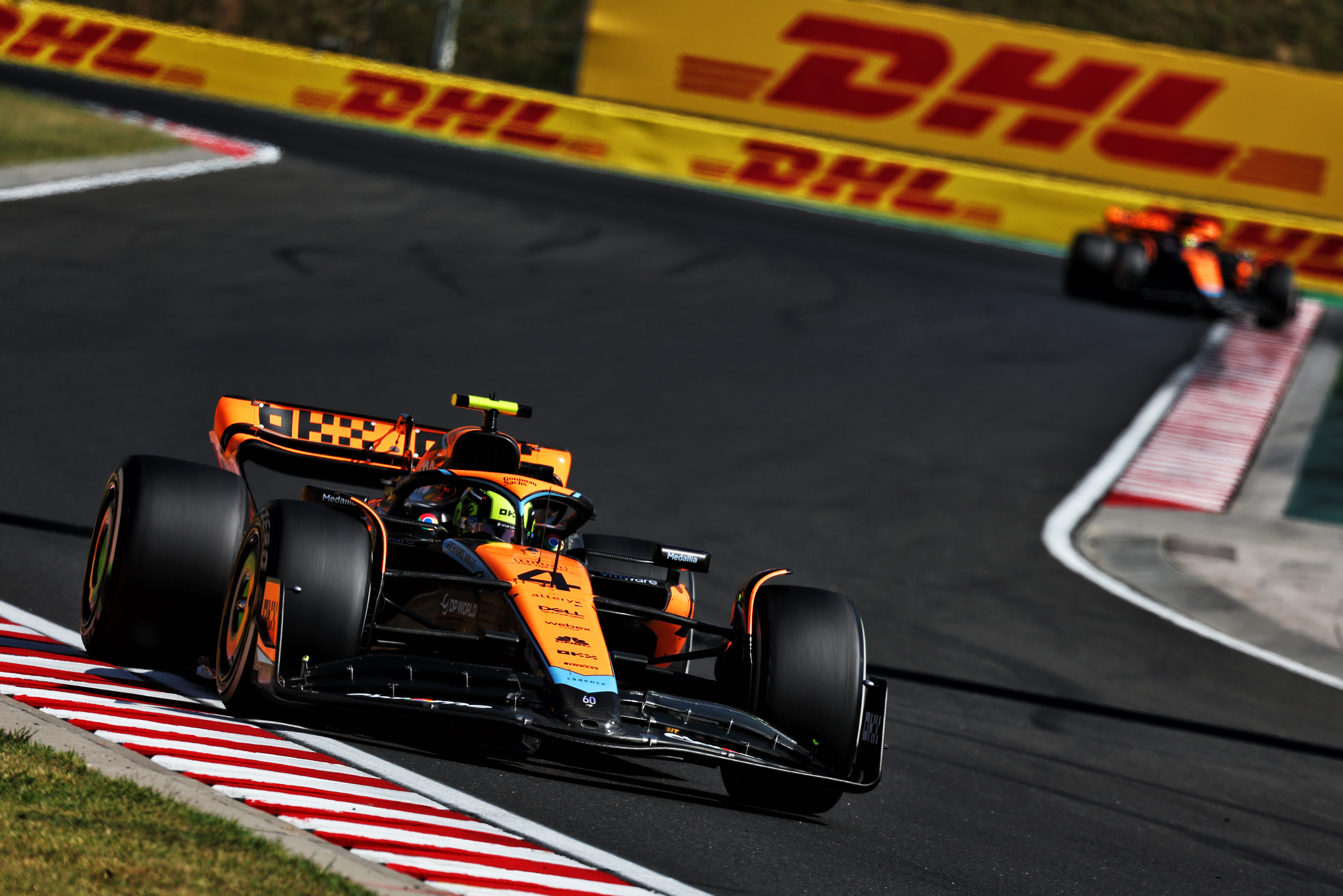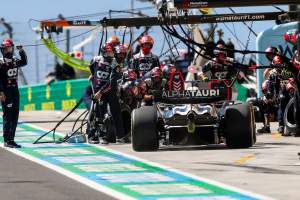The Hungarian Grand Prix was not meant to be as competitive for McLaren. Yet Lando Norris scored its second consecutive podium finish – the first time McLaren has managed that in Formula 1 since 2012.
It continued the burst of mid-season form that must be taken seriously as a real and permanent kind of progress. And if anything, it said more about the benefits of McLaren’s major upgrades than Norris’s British Grand Prix podium two weeks ago.
Maybe it does not look so clear-cut on the surface. Norris led at Silverstone, where McLaren was the second-best team and should have had a double podium but for Oscar Piastri’s misfortune with the timing of a safety car. That was an emphatically brilliant weekend.
In Hungary, even if there was still an excellent end result, it came from a degree of overachievement: a mix of good performance, a quality drive from Norris (and another strong one from Piastri in fifth), plus some circumstances falling McLaren’s way.
It is extremely telling, though, that McLaren could show this kind of performance on a very different kind of circuit, in very different conditions that, as Piastri put it, “were the conditions of our nightmares even a few races ago”.

Norris’s home podium at Silverstone commands a certain type of enjoyment and affection but even he admitted the fact his Hungary result is “another podium in a place we probably weren’t expecting a podium probably makes it even more special again”.
And although he continues to urge caution about where McLaren is exactly, team principal Andrea Stella said: “This makes us certainly a bit more optimistic for the future than we were after Silverstone.”
In summary, McLaren’s already secured some great results. But this was even better. It meant something else. Because while the previous two races might have indicated that the peaks of the MCL60 had been raised this was further proof that the basement has been lifted too.
Pre-weekend the team was playing down its prospects for Hungary, which is more about medium- and low-speed corners.
“The expectation was not to be on the podium,” Norris said. “There’s no super high-speed. You have Turn 4 and Turn 11, which are pretty high speed, but compared to Silverstone, it’s not like an eighth-gear, flat out, Copse or Stowe kind of corner.
“We just lowered the expectation. We didn’t expect to be quite as good.”

Throw in how well the McLaren coped with extremely high track temperatures and the traction limited parts of the circuit, and how much better the car looked after its tyres than previously, and there is a clear consensus among team personnel that this result would not have been anything close to achievable before the upgrade.
But there were other factors too, which should not be ignored. One is that the Hungaroring track grips up really nicely through the weekend and that helps mask some low-speed limitations with traction.
And Stella was keen to point out mid-weekend that, actually, the Hungaroring is proliferated with more medium-speed corners than probably any other track. So while there has clearly been an improvement in that corner profile, not just the fast corners, this was not the ultimate test of how much better the MCL60 is at low speed.
“Even though we say it’s low-speed stuff, there’s also a lot of medium speed,” said Stella.
“Actually, it’s a track dominated by medium speed. And then you have high speed as well.
“So, it’s actually an interesting test for any car because you can see where you are competitive. And for us, looking at the GPS overlays, we see that we are strong in the medium-high speed, because sector two confirms that we are possibly one of the quickest cars, and we still lose time in low speed.
“In terms of understanding the picture it’s clear that thanks to the development, in addition to the high-speed competitiveness, we have added now the medium-speed territory in which we seem to be competitive.
“And there’s still work to do on low speed.”

While McLaren had to be competitive enough to take advantage, it was actually third-best in Hungary, behind Mercedes – so things were worse than Silverstone even if they were still great compared to the start of the season.
Had Norris not jumped Lewis Hamilton on a bad opening lap for the polesitter, the outcome might have been very different. There is a very good chance Hamilton wins that fight if he holds track position.
And then, as Norris put it: “If you look at tyre degradation, Mercedes are way, way better than we are. If Lewis stayed ahead in Turn 2 they would have beaten us and I probably wouldn’t be on the podium at all.
“Then you’d be saying, ‘Ah, Mercedes are quicker’, but just because I overtook him you think McLaren are quicker.”
While it might be wrong to suggest McLaren now ‘fears’ other tracks there is still an emphasis that worse is to come and there is work to do.
The hint is Zandvoort will be quite punishing, but even Spa this weekend has been clocked by Stella as a potential challenge, given there is plenty of time to be lost at the first and last corners.

Norris and Piastri also made it very clear over the Hungary weekend that the car’s not really any better to drive at lower speed, it’s just going through those corners a bit better. So there are clearly still some things from a handling side to be improved.
“It’s a combination of targeting slow-speed corners and load, at the same time handling,” said Norris.

“If we can improve both of these together, that’s already pretty [much] the biggest step we need and we’ll probably take away any weaknesses we have and then we’ll just be strong and it’ll be trying to raise the bar.
“We have a clear plan of action for how to do it and what we need. But actually turning it into something real is the difficulty.”
The message is clear. Hungary was a validation of further improvements the upgrades have made to McLaren’s existing strengths and weaknesses. And it was not the nightmare it would have been earlier in the season.
But McLaren would be wrong to assume this progress is enough. Regardless of another very good result, Hungary still provided evidence of where it remains weak.
It doesn’t neutralise the positives. Just don’t expect McLaren to treat this like second and fifth will be the team’s new reference for a bad weekend.
There were enough subtle warnings to believe that there are, inevitably, going to be circumstances worse than this, in the form of tracks and weekends that bring more of the worst from the car rather than hide the negatives that still exist or accentuate the positives that are looking so impressive.




